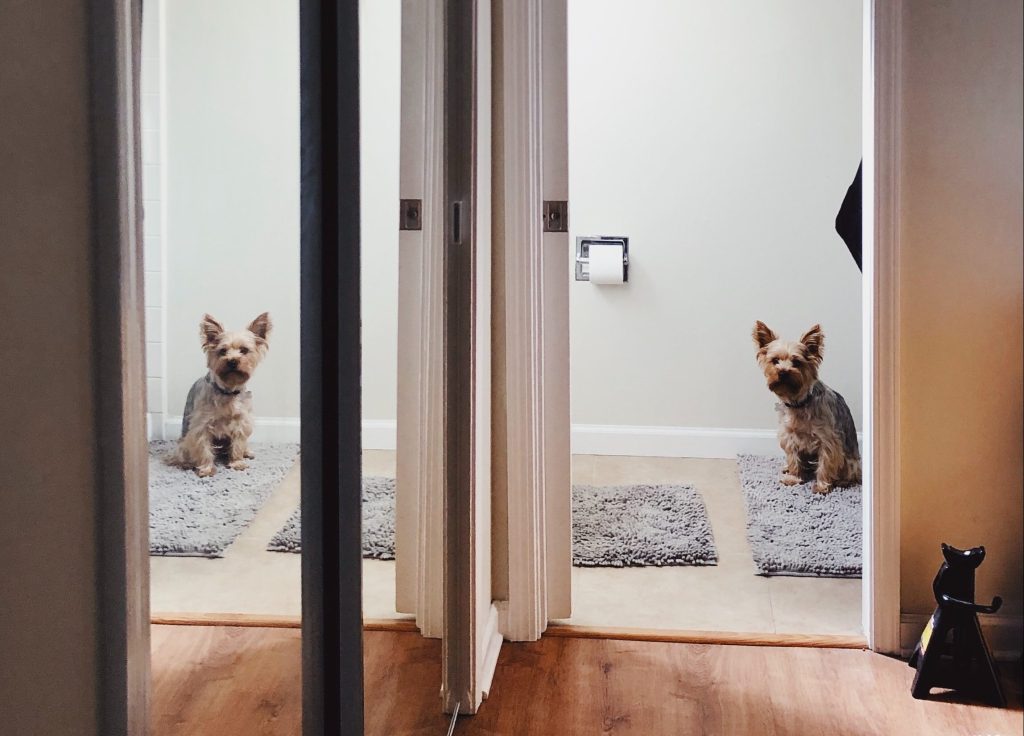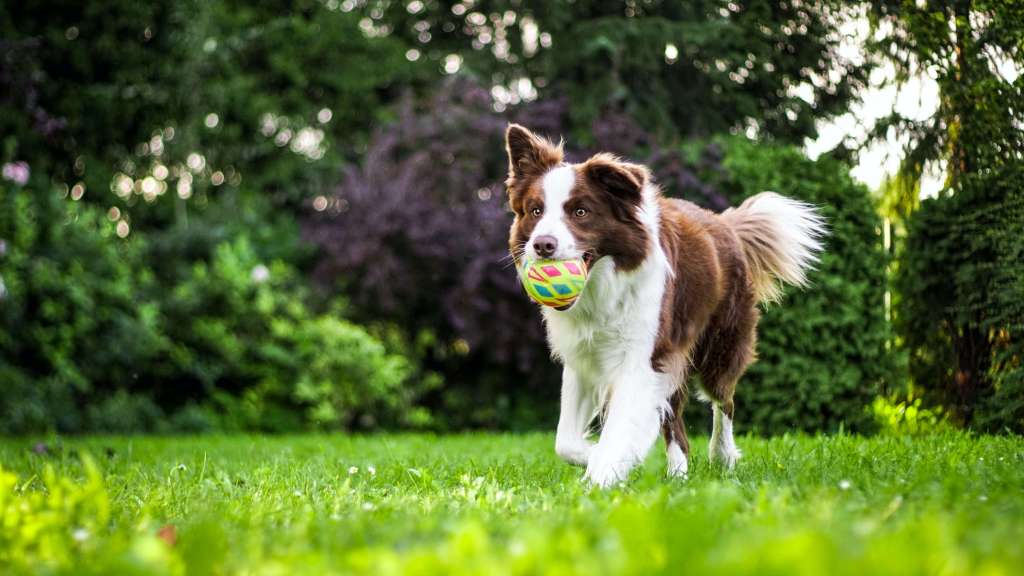Canine separation anxiety is a common problem within the world of dog owners. When left alone, a dog that suffers from separation anxiety may display several different behaviors, including destructive activity, excessive barking, or other indicators of distress. In this post, we will go over the factors that lead to separation anxiety in dogs, as well as the common symptoms of this condition, and we will offer some advice to help you and your four-legged friend in coping with it.
What is Canine Separation Anxiety?
Canine separation anxiety is a common condition where a dog experiences extreme distress when separated from its owner or family members. This anxiety can lead to a range of unwanted behaviors and can affect the dog’s mental well-being. It can also be an unpleasant experience for the dog owner as well.

Causes of Separation Anxiety in Dogs
A variety of things can cause separation anxiety; it is a behavioral condition that can affect dogs of all breeds and ages. While the exact causes of separation anxiety are not fully understood, there are several factors that can contribute to its development within your furry friend. In this section, we’ll take a closer look at the common causes of separation anxiety in dogs and how you can avoid them.
Predisposition for Canine Separation Anxiety
Some breeds of dogs may be more prone to separation anxiety than others. For example, breeds like Bichon Frises, Cavalier King Charles Spaniels, and German Shepherds are known to be more prone to this condition. However, it’s important to note that any dog can develop separation anxiety, regardless of their breed.
Early Life Experiences
Dogs that experienced traumatic events in their early life or were separated from their mother or littermates too early may be more susceptible to separation anxiety. Puppies that are removed from their mothers too early miss out on critical socialization and learning experiences, which can affect their ability to cope with being alone.
Lack of Socialization
Dogs that have not been properly socialized may become overly dependent on their owners, leading to separation anxiety. Proper socialization is important for dogs to learn how to interact with other dogs and humans and to develop confidence and independence.
Changes in Routine
Changes in routine can trigger separation anxiety in dogs. A sudden change in the owner’s schedule, moving to a new home, or the addition or loss of a family member can all cause stress and anxiety in dogs. Dogs are creatures of habit and thrive on routine, so any significant changes can be difficult for them to adjust to.
Medical Issues
In some cases, separation anxiety can be a symptom of an underlying medical condition, such as pain or a neurological disorder. If you suspect that your dog’s separation anxiety may be related to a medical issue, it’s important to take them to a veterinarian for a thorough examination.

Signs of Canine Separation Anxiety
Separation anxiety in dogs can manifest in a variety of ways, and it’s important for dog owners to recognize the signs of this condition. In this section, we’ll take a closer look at the common symptoms of separation anxiety in dogs.
Destructive or Anxious Behavior
One of the most common signs of separation-related behavior problems in dogs is destructive behavior. Dogs may chew, scratch, or dig when left alone, often focusing on doors or windows in an attempt to escape and reunite with their owner. This distress behavior is one of the most common behaviors.
Excessive Vocalization
Dogs with separation anxiety may engage in excessive barking, whining, or howling when their owner is not present. This persistent vocalization is a sign of distress and may continue for long periods of time. In addition, excessive salivation, drooling, or panting are also symptoms of anxiety.
House Soiling
Another common sign of separation anxiety in dogs is house soiling. Even if a dog is otherwise house-trained, they may urinate or defecate indoors when left alone. This behavior is a result of the dog’s anxiety and may be accompanied by other signs of distress.
Restlessness
Dogs with separation anxiety may pace or appear restless when they sense that their owner is about to leave. They may follow their owner around the house, appear anxious or worried, and show other signs of nervousness.
Escape Attempts
Some dogs with mild separation anxiety may attempt to escape from their confinement area or home in an effort to reunite with their owner. This behavior can be dangerous and can put the dog at risk of injury or getting lost.
Salivation or Panting
Excessive drooling or panting when the owner is not present can be a sign of anxiety in dogs. This behavior is a physical response to stress and is often accompanied by other signs of distress.
Depression or Lethargy
In some cases, dogs may become withdrawn or less active when their owner is away. They may show signs of depression or lethargy, appearing disinterested in their surroundings or activities.

Solutions to Canine Separation Anxiety
If your dog is exhibiting signs of separation anxiety, there are several things you can do to help alleviate their anxiety and prevent destructive behavior. Here are some tips to consider:
Gradual Desensitization
Gradual desensitization is a process that involves slowly acclimating your dog to being alone. Start by leaving your dog alone for short periods of time, then gradually increase the duration over time.
Provide Mental Stimulation
Providing your dog with food toys, puzzles, and other forms of mental stimulation can help keep them occupied and distracted when you are not home.
Practice Calming Techniques
Teaching your dog calming techniques such as deep breathing or meditation can help them relax when you are not around.
Consider Anti-Anxiety Medication
While training sessions can be an effective treatment of separation anxiety, in severe cases of separation anxiety, medication may be necessary to help your dog cope with their anxiety.
Seek Professional Help
If your dog’s separation anxiety is severe and is affecting their quality of life, it may be time to seek professional help from a veterinarian or animal behaviorist.
Practice Leaving and Returning
Teach your dog that you will always come back by practicing leaving and returning home multiple times a day. Start with short periods of time and gradually increase the duration. The dog can also be given food prior to the owner’s departure to associate the owner leaving with a positive experience.
When to See a Vet
In some cases, separation anxiety can be a symptom of an underlying medical condition. If your dog’s separation anxiety is severe or is accompanied by other symptoms such as vomiting or diarrhea, it’s important to take them to a veterinarian. Your vet can perform a physical exam and run tests to rule out any medical issues that may be contributing to your dog’s anxiety.

FAQs About Canine Separation Anxiety
Q: What is separation anxiety in dogs?
A: Separation anxiety in dogs is a behavioral condition where dogs experience extreme distress when separated from their owners or family members. This anxiety can lead to a range of unwanted behaviors and can affect both the dog’s mental well-being and the owner’s peace of mind.
Q: What causes separation anxiety in dogs?
A: Several factors can contribute to the development of separation anxiety in dogs, including genetics, early life experiences, lack of socialization, changes in routine, and medical issues.
Q: What are the symptoms of separation anxiety in dogs?
A: Common signs of separation anxiety in dogs include destructive behavior, excessive barking, house soiling, pacing or restlessness, escape attempts, salivation or panting, and depression or lethargy.
Q: How can I help my dog with separation anxiety?
A: There are several things you can do to help your dog cope with separation anxiety, including gradual desensitization, providing mental stimulation, practicing calming techniques, considering medication, and seeking professional help.
Q: Can separation anxiety in dogs be cured?
A: While separation anxiety in dogs may never be fully cured, it can be managed with the right approach. With patience, consistency, and some training, you can help your furry friend overcome their anxiety and enjoy a happy, healthy life.
Q: Can medication help with separation anxiety in dogs?
A: In severe cases of separation anxiety, medication may be necessary to help your dog cope with their anxiety. Talk to your veterinarian about the best treatment options for your furry friend.
Q: When should I see a veterinarian for my dog’s separation anxiety?
A: If your dog’s separation anxiety is severe or is accompanied by other symptoms such as vomiting or diarrhea, it’s important to take them to a veterinarian. Your vet can perform a physical exam and run tests to rule out any medical issues that may be contributing to your dog’s anxiety.
Q: Can training help with separation anxiety in dogs?
A: Yes, training can be an effective way to help your dog cope with separation anxiety. Gradual desensitization, providing mental stimulation, and practicing calming techniques are all training methods that can help your furry friend feel more comfortable when left alone.
Q: Why do some dogs develop separation anxiety?
A: There are several factors that can contribute to the development of separation anxiety in dogs, including genetics, early life experiences, lack of socialization, changes in routine, and medical issues.
Q: Are certain dog breeds more prone to developing separation anxiety?
A: Yes, some dog breeds are more prone to developing separation anxiety than others. Breeds that are known to be more prone to separation anxiety include Cocker Spaniels, Bichon Frises, German Shepherds, and Vizslas.
Q: How do I know if my dog is suffering from separation anxiety and not something else?
A: Common signs of separation anxiety in dogs include destructive behavior, excessive barking, house soiling, pacing or restlessness, escape attempts, salivation or panting, and depression or lethargy. However, it’s important to rule out any underlying medical issues by taking your dog to a veterinarian.
Q: Is there a cure for separation anxiety in dogs?
A: While separation anxiety in dogs may never be fully cured, it can be managed with the right approach. With patience, consistency, and some training, you can help your furry friend overcome their anxiety and enjoy a happy, healthy life.
Separation Anxiety in Dogs
Canine separation anxiety is a common problem among dog owners, but it is a treatable condition. Understanding the causes, symptoms, and solutions to separation anxiety can help your dog feel more comfortable and secure when left alone. With patience and perseverance, you can help your furry friend overcome their anxiety and enjoy a happy, healthy life.






Pingback: The Science of Dog Emotions: Do Dogs Really Love Us? - The Pawesome Post
Great article. Canine separation anxiety is very real, so great to get helpful tips on how to help our furry friends cope with this distressing condition. Thank you ❤️